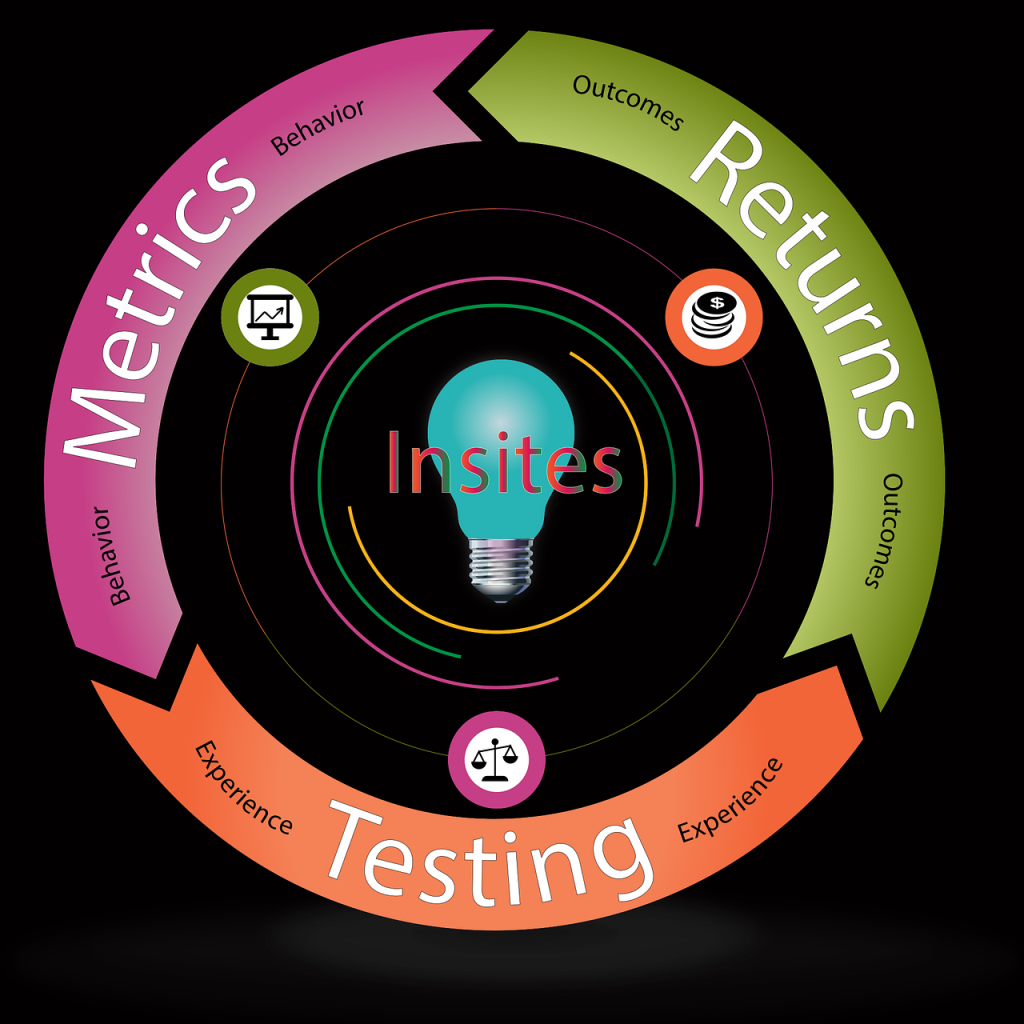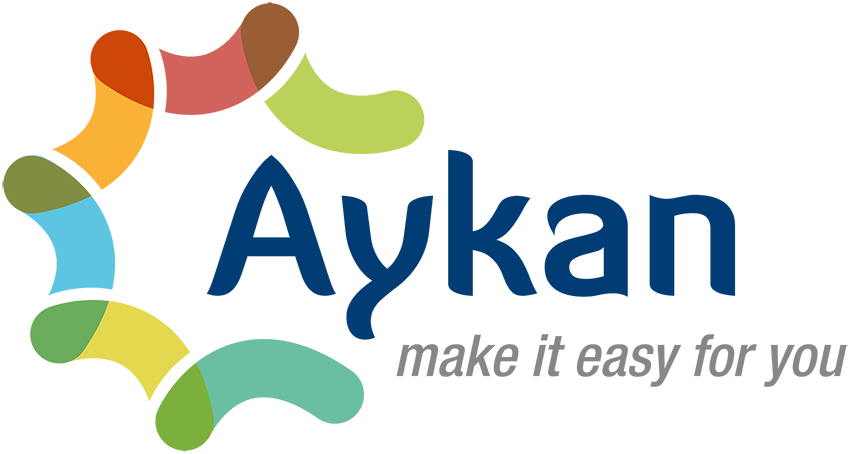As digital marketplaces grow in complexity and scale, the need for streamlined operations and unified data becomes increasingly critical. Sharetribe, a popular platform for building customizable online marketplaces, provides robust features for launching and managing marketplace operations. However, to truly unlock its potential and support business scalability, integrating Sharetribe with other essential business systems—such as Customer Relationship Management (CRM), Enterprise Resource Planning (ERP), and marketing automation tools—is vital.
These integrations help create a cohesive digital ecosystem, enabling businesses to automate workflows, synchronize customer and transaction data, and gain holistic insights into their operations. For instance, connecting a CRM system can improve customer service and retention, while ERP integration can enhance inventory and order management. Marketing automation tools can further amplify reach and engagement by delivering targeted campaigns based on real-time user behavior and marketplace data.
In this section, we explore the benefits, challenges, and best practices of integrating Sharetribe with these external systems, providing guidance on how to enhance your marketplace’s efficiency, intelligence, and overall performance.
Why Integrate Sharetribe with CRM, ERP, and Marketing Automation Tools?
Out-of-the-box, Sharetribe offers robust tools for managing the core functions of a marketplace—such as listings, transactions, messaging, and payments. However, as your business grows and becomes more complex, you’ll likely need to extend its capabilities by integrating with external systems like CRM (Customer Relationship Management), ERP (Enterprise Resource Planning), and marketing automation tools. These integrations can help bridge the functional gaps and significantly enhance your marketplace’s efficiency, scalability, and user engagement.
Here’s a closer look at the key benefits of these integrations:
Centralized Customer Data for Improved Service and Targeting
In a dynamic marketplace, customer data often exists in silos—scattered across various tools such as email marketing platforms, CRM systems, payment gateways, and customer support software. Out-of-the-box Sharetribe captures core user and transaction information, but it doesn’t always provide the rich, multi-dimensional customer insights needed for personalized service and targeted marketing.

By integrating external systems, all customer-related data is pulled into a centralized repository, creating a single source of truth. This comprehensive data hub includes not just purchase history, but also browsing behavior, communication records, preferences, and feedback. This unified dataset enables businesses to understand each customer holistically—knowing who they are, what they like, how they engage, and what challenges they face.
This depth of insight transforms the customer experience. Support teams can anticipate issues before customers even reach out, offering proactive assistance that builds trust. Marketing teams can design hyper-targeted campaigns, tailoring promotions based on individual behaviors, such as recommending products related to past purchases or targeting dormant users with re-engagement offers. The result is a marketplace that feels more intuitive and customer-centric, driving higher satisfaction, repeat business, and brand loyalty.
Automated Processes to Reduce Manual Effort and Human Error
Manual processes in marketplace operations—such as updating inventory, processing payments, or responding to customer queries—are time-consuming and prone to mistakes. As transaction volumes grow, these inefficiencies multiply, causing delays, inaccuracies, and frustrated customers.

Automating workflows through external systems integrated with Sharetribe revolutionizes operational efficiency. Tasks that once required manual input can now run autonomously. For instance, when a buyer completes a purchase, an automated sequence can instantly update stock levels, send confirmation emails, process payment settlements, and trigger shipping notifications—all without human intervention.
This automation drastically reduces errors like duplicate orders, incorrect shipment details, or missed payment reconciliations that could lead to financial loss or customer dissatisfaction. It also accelerates processing times, allowing your marketplace to handle high volumes of transactions smoothly.
Moreover, automation frees up your team’s capacity, letting them shift focus from mundane operational chores to strategic initiatives such as improving user experience, expanding offerings, or optimizing marketing strategies. Ultimately, automated processes create a reliable, scalable infrastructure that sustains growth and enhances service quality.
Unified Analytics That Help You See the Big Picture
Data fragmentation is a common challenge in marketplace management. Marketing data might reside in one system, financial reports in another, and customer support metrics somewhere else. This fragmentation makes it difficult to get a clear, comprehensive understanding of how your marketplace is performing.
By integrating external analytics platforms with Sharetribe, data from all key operational areas—sales, marketing, customer support, finance—flows into a centralized analytics dashboard. This holistic view equips decision-makers with a 360-degree perspective on business health.

You can track vital KPIs such as conversion rates, customer lifetime value, marketing ROI, and operational efficiency in real-time. Advanced analytics allow you to spot emerging patterns, such as seasonal demand fluctuations, common customer pain points, or which marketing channels yield the best retention.
With this clarity, you can make informed, data-driven decisions to optimize every aspect of your marketplace. For example, if analytics reveal a dip in repeat purchases, you might adjust your retention strategy or offer personalized incentives. Unified analytics also improve forecasting accuracy, helping you allocate resources wisely and plan for future growth with confidence.
Beyond internal benefits, clear, comprehensive analytics provide transparency for investors, partners, and stakeholders, fostering trust and alignment around your business objectives.
Scalable Operations That Support Business Growth
Scaling a marketplace presents unique operational challenges. As user numbers and transaction volumes increase, systems that once worked smoothly may become bottlenecks, causing delays, errors, or degraded user experiences.
External systems integrated with Sharetribe provide the flexibility and robustness needed to scale efficiently. Specialized tools handle critical functions—such as payment processing, fraud detection, customer support ticketing, and inventory management—at scale, ensuring each aspect of your operations grows seamlessly with demand.

For example, integrating with a high-capacity payment gateway allows your marketplace to securely process thousands or millions of transactions without downtime or risk. Customer support platforms equipped with AI and automation can handle surges in inquiries while maintaining fast response times.
This modular architecture also enables rapid adaptation. You can add new tools or swap out existing ones to meet evolving needs, whether expanding into new markets, supporting multiple currencies and languages, or launching new product categories.
By leveraging scalable external systems, your marketplace maintains operational resilience and service excellence even as complexity and volume rise. This foundation supports sustainable growth and helps you seize market opportunities without sacrificing quality or reliability.
Methods for Integration:
1. Zapier: No-Code Automation for Easy Integrations
Zapier is a powerful, user-friendly no-code automation platform that acts as a bridge connecting Sharetribe with thousands of popular business applications such as HubSpot, Mailchimp, Slack, Google Sheets, and more. It is designed for users who want to automate workflows without writing any code, making it accessible to non-technical teams.

Zapier works by creating “Zaps”—automated workflows triggered by specific events in Sharetribe. For example, when a new order is placed on your Sharetribe marketplace, Zapier can instantly perform actions like adding the customer’s information to a Mailchimp mailing list for email marketing campaigns, or updating a contact record in HubSpot CRM to keep your sales team informed.
This automation helps reduce manual data entry and ensures consistency across platforms. It also accelerates communication between departments; for example, a Slack notification can be triggered when a high-value order is placed, alerting sales or support teams in real-time. Zapier’s intuitive interface lets users build and manage these integrations quickly, enabling marketplaces to scale their operations efficiently without relying on developers for every new connection.
2. Sharetribe Integration API: Robust Server-Side Communication for Advanced Use Cases
The Sharetribe Integration API, available in Sharetribe Flex, is designed for businesses that require deeper, more sophisticated integration capabilities beyond what no-code tools can provide. This API enables direct server-to-server communication, allowing external systems to interact with Sharetribe’s backend in real-time with precise control over the data exchanged.

This method is ideal for companies that need to synchronize complex datasets or build custom workflows tailored to their unique operational needs. For example, a marketplace might use the Integration API to sync transaction or booking data with their Enterprise Resource Planning (ERP) system or Customer Relationship Management (CRM) platform. This ensures that all sales, inventory, and customer data are consistently updated across systems, supporting accurate reporting and streamlined financial operations.
Because this integration happens at the server level, it offers higher security, reliability, and performance compared to client-side solutions. It also supports bi-directional data flows, meaning changes in external systems—like an update in inventory levels or customer profiles—can be reflected back into Sharetribe automatically, keeping all platforms in sync.
3. Client Application: Full Customization Using SDKs for Tailored Integrations
For marketplaces with specific needs that go beyond existing tools and APIs, Sharetribe offers the option to develop client applications using its SDKs (Software Development Kits). This method allows developers to build fully customized integrations that extend the core functionality of Sharetribe, tailoring both backend workflows and user-facing interfaces.

With this approach, businesses have complete control over how data flows between Sharetribe and other systems, as well as how users interact with the marketplace. For example, a developer might create a custom booking confirmation workflow that not only updates inventory in an external ERP but also triggers targeted marketing emails through a third-party platform. This can be done in a seamless, branded experience that aligns perfectly with the company’s operational processes and customer expectations.
Client application integrations are especially valuable when marketplaces require unique business logic, custom UI components, or complex multi-step processes that no existing integration tool supports out-of-the-box. While this approach demands development resources, it delivers maximum flexibility and can significantly enhance operational efficiency and user experience.
Benefits of Integration:
1. Increased Operational Efficiency
Integrating Sharetribe with external systems drastically improves how your operations run day-to-day. Without integration, many marketplace processes—like updating customer records, processing orders, managing inventory, or handling payouts—require manual intervention. This creates bottlenecks, slows response times, and increases the risk of mistakes.
Through integration with tools like CRMs, accounting software, or logistics platforms, these tasks can be automated and streamlined. For instance, when an order is placed, the system can automatically update the stock levels in your inventory tool, send a purchase receipt, schedule a delivery, and create a record in your bookkeeping system. This reduces the need for duplicated data entry and allows team members to focus on growth-driving activities like expanding the catalog, improving UX, or developing partnerships.
By optimizing workflows and reducing friction between departments, integrated systems allow your business to operate more smoothly and scale more effectively with fewer resources.
2. Enhanced Customer Experience
Customer expectations have evolved. They demand fast, personalized, and frictionless experiences. Integrating Sharetribe with external customer support, email marketing, and personalization tools enables your team to deliver just that.
For example, support agents using a tool like Zendesk or Intercom can access a full customer profile—order history, previous issues, delivery preferences—without leaving their dashboard. This eliminates the need for customers to repeat information and results in faster resolution times.
On the marketing side, integrations with platforms like Mailchimp or Klaviyo allow for highly personalized communication. A returning customer can receive product recommendations based on previous purchases, while a new user might be guided through onboarding content tailored to their category of interest.
Integrated systems ensure that every customer interaction feels informed and responsive. This kind of experience strengthens customer trust and loyalty, and encourages repeat transactions—critical drivers of marketplace success.
3. Real-Time Data Synchronization
Real-time synchronization is one of the most valuable technical outcomes of integration. It ensures that your business is always working with current, accurate data across every system, reducing delays and miscommunication.
Without integration, updates to one system—like a new booking in Sharetribe—may take hours or days to reflect in your CRM or ERP, leading to outdated records and misaligned teams. With real-time syncing, changes made in Sharetribe automatically reflect across all integrated tools within seconds. For example, when a vendor updates their listing, that information is immediately reflected in your marketing dashboard, pricing system, and external search platforms.
This improves data accuracy and prevents issues like overbookings, understocked inventory, or duplicate contacts. For marketplaces that rely on quick turnaround—such as event ticketing, shared rentals, or on-demand services—real-time data is mission-critical. It not only enhances internal reliability but also improves external service levels, contributing to better reputation and increased retention.

4. Scalable Infrastructure for Growth
As a marketplace expands—across regions, product lines, or user types—its operational complexity multiplies. More users mean more transactions, more data, and more touchpoints. Without integration, your business is forced to scale linearly: more staff, more manual tasks, more overhead.
Integrated systems, by contrast, allow for exponential scalability. You can add capabilities without overwhelming your operations. For example, integrating with multilingual CMSs allows for regional expansion, while connecting to fulfillment and shipping APIs lets you onboard new vendors without changing core logistics processes.
Also, integrations make it easier to build a modular tech stack. As new needs arise—like fraud detection, tax compliance, or affiliate tracking—you can plug in specialized tools without disrupting your existing workflows. This flexibility gives you a competitive edge, allowing rapid iteration and responsiveness as market demands change.
Scalable infrastructure ensures that your marketplace can grow in complexity and volume without sacrificing efficiency or quality of service.
5. Better Business Intelligence and Analytics
Data is the engine behind smart decisions. But if your data lives in separate systems—one for sales, another for marketing, another for support—you’re missing the full picture. Integration enables centralized data collection and real-time analytics that combine insights from across your operations.
For example, when Sharetribe is integrated with a data warehouse or business intelligence tool like Google Data Studio, Tableau, or Looker, you can generate unified reports that show how marketing campaigns influence user signups, how support issues affect repeat purchases, or how seasonal trends impact bookings.
You can also automate dashboards for different teams:
Marketing can view campaign performance alongside actual revenue.
Operations can see which listings have the highest fulfillment times.
Leadership can monitor top-line KPIs in one glance.
This consolidated insight empowers better forecasting, budgeting, resource allocation, and risk management. It also helps uncover patterns and trends that wouldn’t be visible if systems were disconnected. In the long run, better data leads to smarter strategies, increased ROI, and faster innovation.
6. Improved Collaboration Across Teams
Disjointed tools often lead to disjointed teams. Sales doesn’t know what marketing is doing. Support lacks context from the product team. Finance can’t track real-time revenue. Integration helps break down these silos by allowing systems—and, by extension, departments—to work from a single, consistent dataset.
For instance, when Sharetribe is integrated with a CRM, both the sales and support teams can see complete customer interaction histories. If a customer reports a problem, the support team has instant access to purchase details, while the sales team can be notified if the issue might affect future deals or renewals.
Integrated systems also improve internal communication. Tools like Slack or Microsoft Teams can receive automatic updates from Sharetribe when key events happen—such as a high-value booking or a vendor uploading a new listing—so everyone stays aligned.
Better cross-functional visibility leads to stronger collaboration, faster decision-making, and a more unified approach to customer and business management.

7. Competitive Advantage Through Agility
In today’s fast-moving digital economy, agility is everything. The ability to quickly adapt to customer needs, market trends, and business opportunities is what separates high-performing marketplaces from the rest. Integration makes that agility possible.
Want to launch a loyalty program? Plug in a customer rewards platform and start tracking engagement. Need to comply with new tax regulations? Connect a compliance API without rebuilding your billing system. Want to test a new pricing model or introduce product bundling? Modify your data flow via your integrated pricing engine.
Instead of months of development, these changes can be made quickly and rolled out with minimal disruption. This flexibility enables your business to innovate continuously, run experiments, and scale new features faster than competitors who rely on monolithic or disconnected systems.
Ultimately, integrated systems give you the speed, flexibility, and control needed to stay ahead in a highly competitive marketplace environment.
Conclusion
Integrating Sharetribe with external systems is not just a technical upgrade—it’s a strategic investment in the scalability, efficiency, and competitiveness of your marketplace. Whether you’re automating workflows with tools like Zapier, building advanced data connections through Sharetribe’s Integration API, or customizing client applications with SDKs, integration empowers you to run a smarter, more connected business.
By centralizing data, automating manual processes, enabling real-time decision-making, and supporting seamless collaboration, integrations lay the groundwork for sustainable growth. They enhance the customer experience, reduce operational costs, and make your marketplace more agile in responding to market demands.
In today’s fast-paced digital economy, standing still means falling behind. Integrated systems allow your marketplace to move faster, operate smarter, and serve users better—turning technology into a true competitive advantage.
FAQ's
1. What tools can I integrate with Sharetribe?
You can integrate Sharetribe with a wide range of tools, including popular CRMs (like HubSpot, Salesforce), ERPs (like NetSuite, SAP), marketing automation tools (like Mailchimp, Klaviyo), customer support platforms (like Zendesk, Intercom), payment gateways, analytics platforms, and more. Integration can be achieved via no-code tools like Zapier, APIs, or custom client applications using SDKs.
2. Do I need a developer to integrate Sharetribe with external systems?
It depends on your use case. For basic automation (like syncing contacts or sending emails), no-code tools like Zapier are often sufficient and require no programming. However, for advanced workflows, real-time syncing, or custom business logic, a developer will be needed to use Sharetribe’s Integration API or to build client applications with SDKs.
3. What’s the difference between Zapier and the Integration API?
Zapier is best for simple, user-friendly automations (e.g., “when a new user signs up, add them to Mailchimp”). It’s quick to set up with no coding required.
The Integration API, available in Sharetribe Flex, provides deeper, server-level integrations with more control and flexibility. It’s ideal for syncing data with ERPs, CRMs, or custom backend systems in real-time.
4. How secure are integrations with Sharetribe?
Integrations using Sharetribe’s official API or SDKs follow best practices for authentication, encryption, and data privacy. Server-side integrations (e.g., through the Integration API) are especially secure, as they avoid exposing sensitive logic on the client side. Security also depends on how external tools handle and store data, so always choose reputable platforms.
5. Can I sync customer and order data in real-time across platforms?
Yes. Using the Integration API or custom client applications, you can enable real-time synchronization of user, order, booking, and transaction data with other platforms like CRMs, ERPs, or marketing systems. This ensures all systems stay up to date and reduces errors caused by outdated data.
6. How do integrations help with scaling my marketplace?
Integrated systems reduce manual effort, improve data accuracy, and allow you to automate operations. This means as your transaction volume, customer base, or geographic reach grows, your backend systems can keep up without needing to scale your team linearly. You can also plug in specialized tools as new business needs arise.








